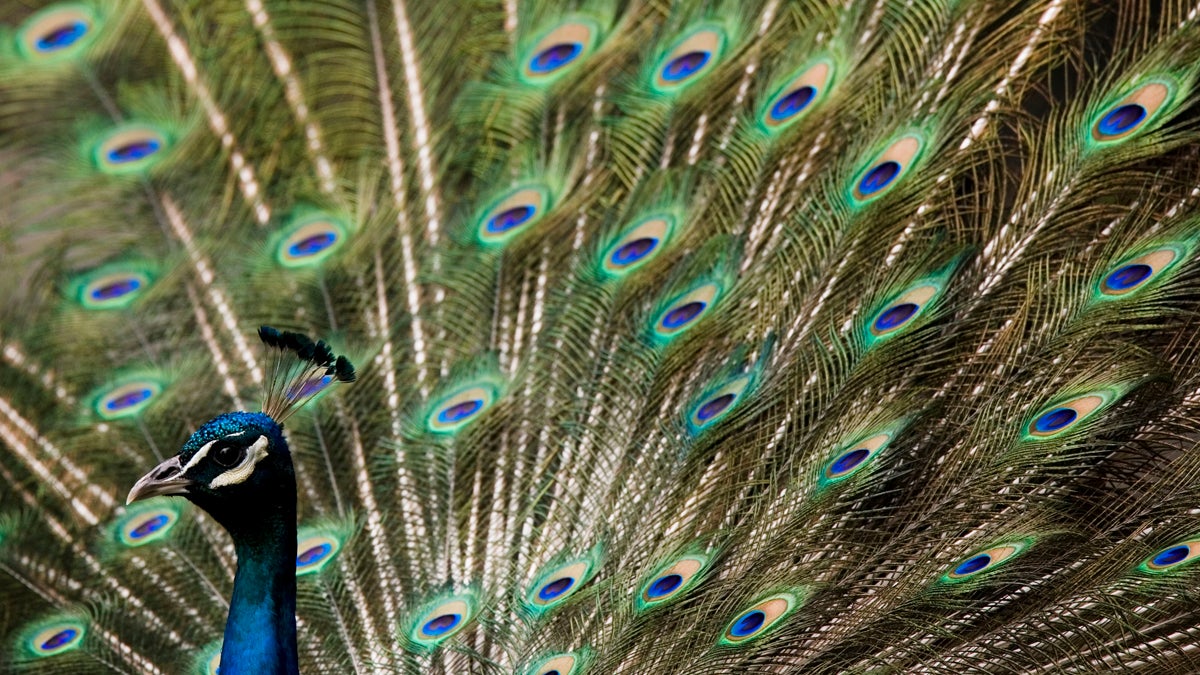Peacock research may offer clues to diagnosing, treating human disorders

A peacock displays its feathers at the Philadelphia Zoo. Mew research on the birds may offer insight on the diagnosis and treatment of autism, schizophrenia and other human neurodevelopmental disorders. (AP file photo)
A University of Pennsylvania researcher hopes his new study on peacocks could offer insight into humans.
Researchers studied 14 adult male peacocks during mating season to watch where each animal looked. The birds were dressed up like little cyborgs: they wore an eye patch and a hat like a bike helmet with two cameras. The study looked at how peacocks acquire information about the surrounding world, combine that with knowledge they already have, and make decisions,
Penn professor Michael Platt was surprised to learn that, instead of focusing on the competition’s brightly colored tail feathers, the birds watched their lower feathers and legs.
“The evolution of the peacock’s tail has been a riddle since the time of Darwin. How do you explain such an elaborate design?” he said.
Researchers do have ideas why evolution would invest so much energy into such a vibrant feather display.
“We think it’s probably some kind of a signaling mechanism that says, ‘This guy is pretty good quality, he has good genes, he’s strong enough to carry around this tail and not get eaten by predators,'” Platt said.
The findings could explain more than peacock behavior, he said.
“It helps bring us closer to understanding how we — and how other animals — use info information from our environments to make decisions,” Platt said. “In this case, how does a peacock or a peahen use information about another individual to decide whether to fight or decide whether to mate or decide whether to run away?”
Platt pointed out that humans also spend a lot of time sizing one another up to determine emotions and status — and to try to predict behavior. The peacock study, published in the Journal of Experimental Biology, could help better in understanding how humans make decisions.
It might offer insight into how to better diagnose and help people with autism, schizophrenia and other neurodevelopmental disorders, Platt said.
WHYY is your source for fact-based, in-depth journalism and information. As a nonprofit organization, we rely on financial support from readers like you. Please give today.

